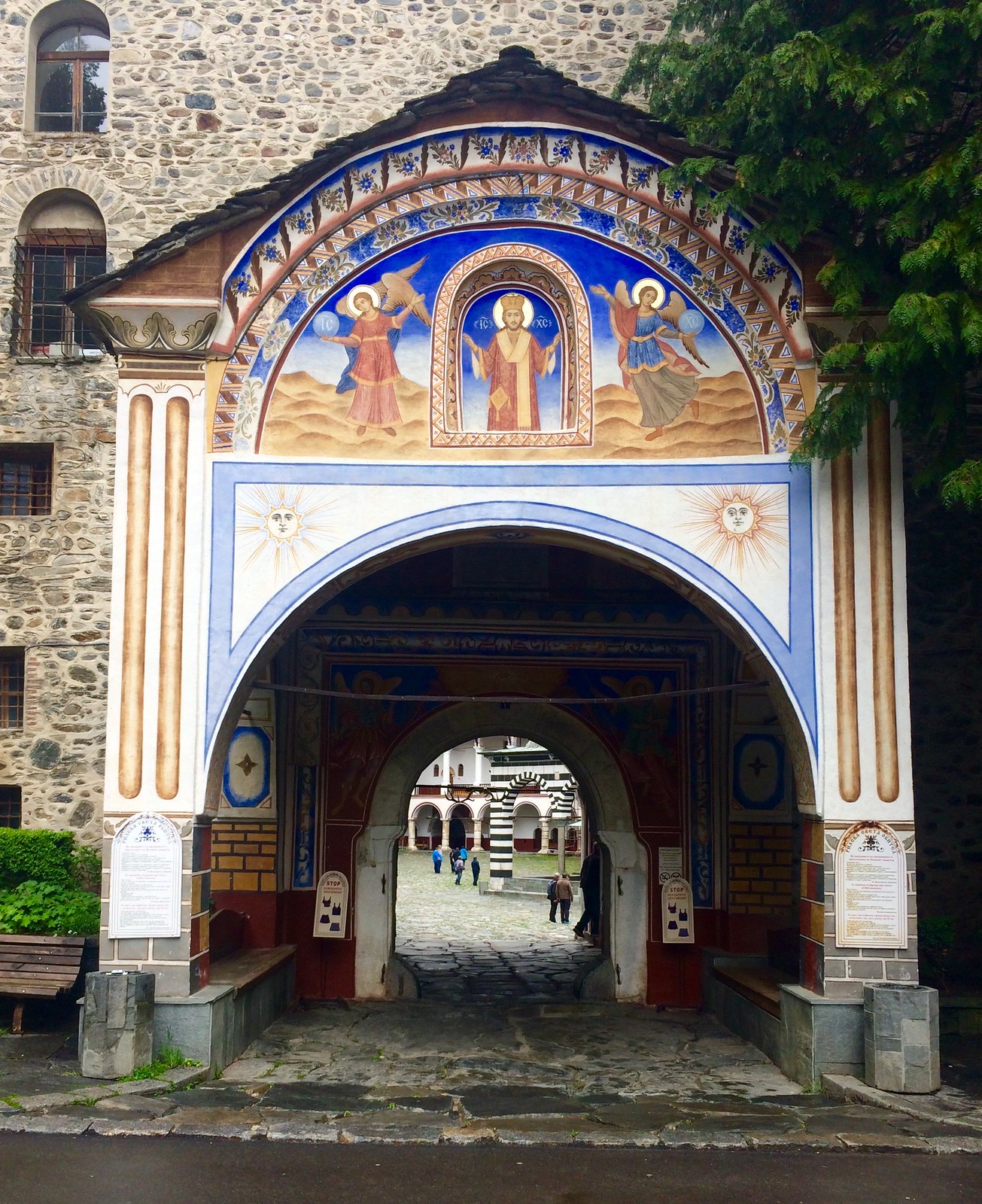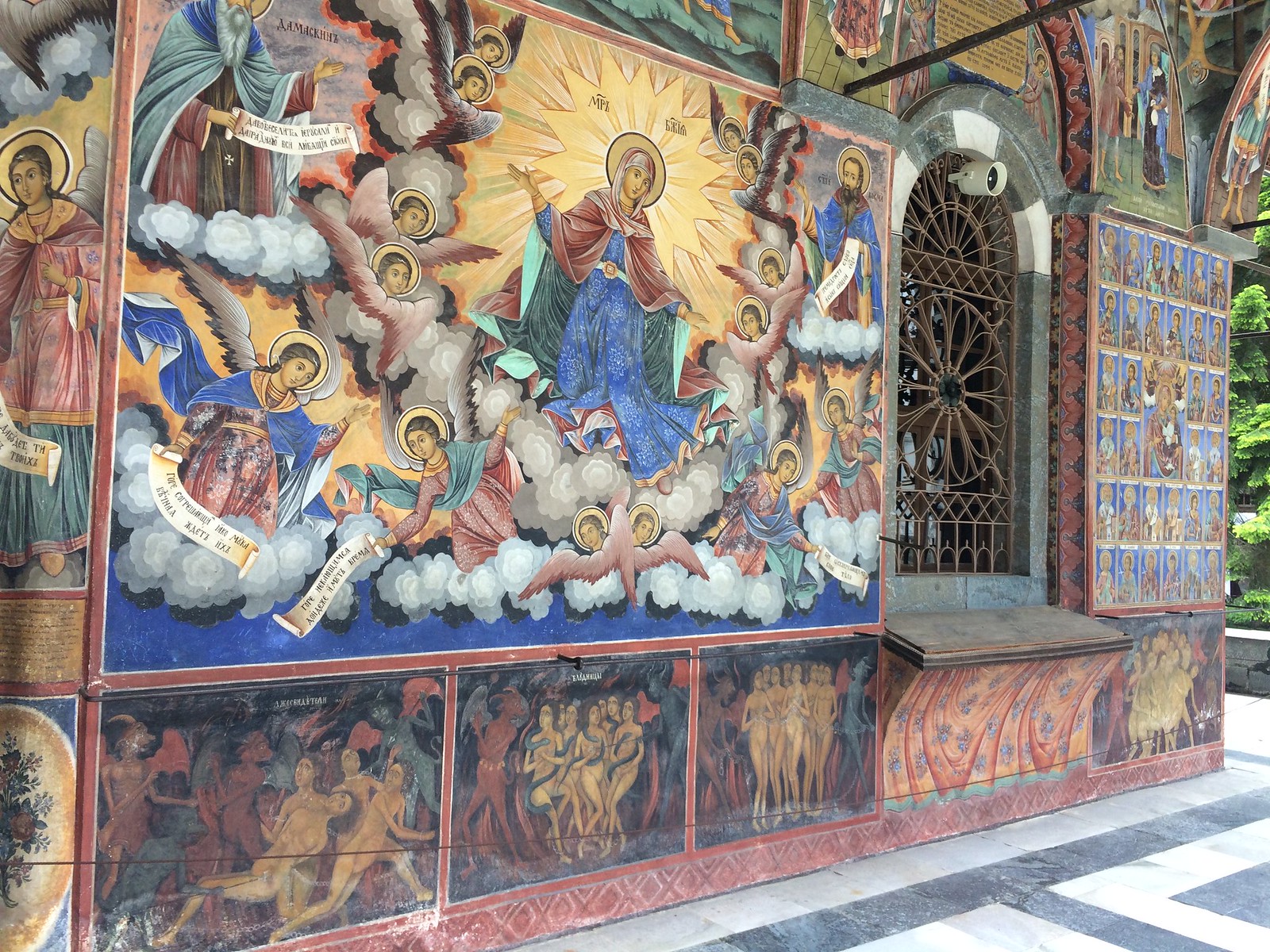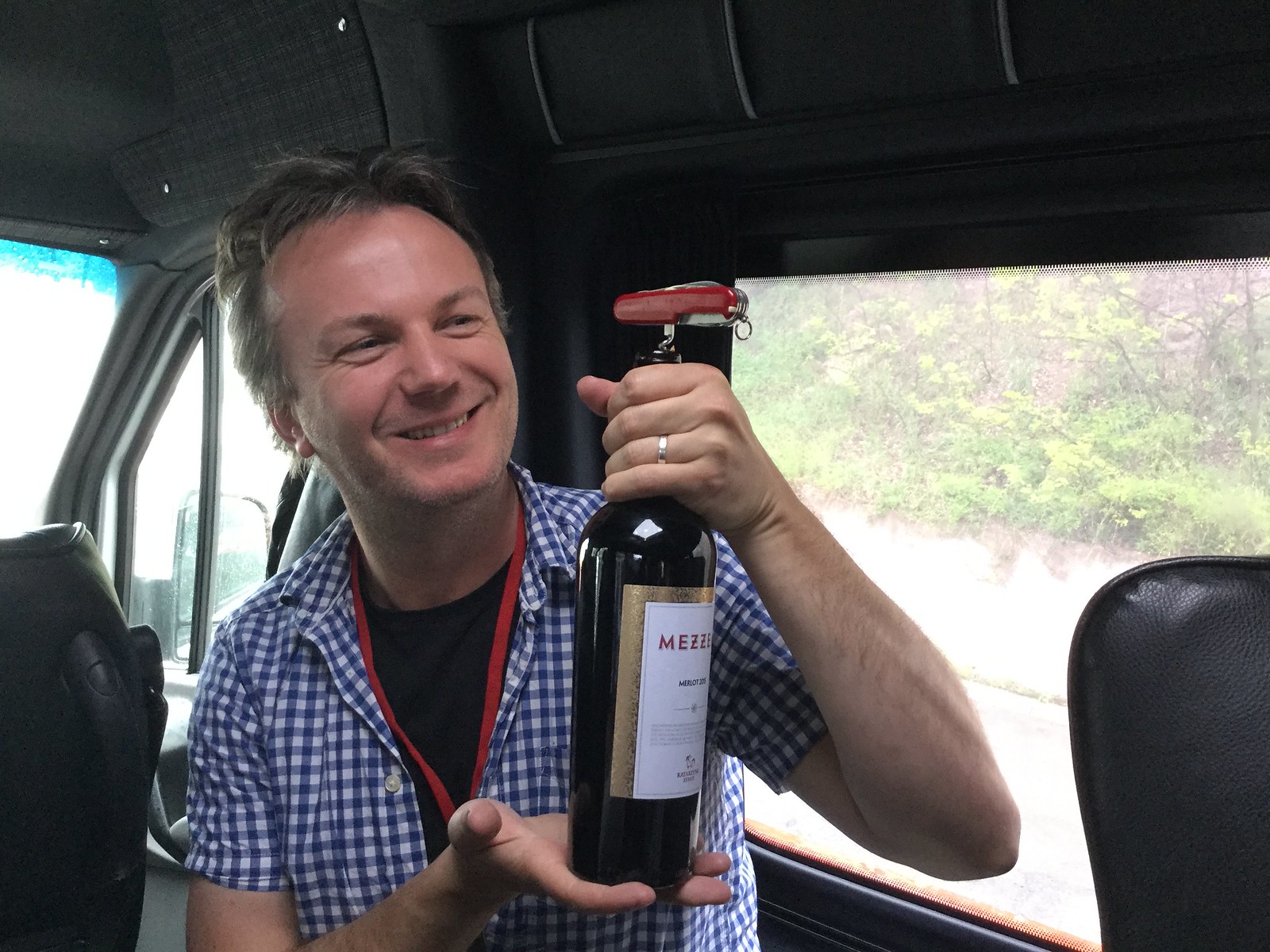Macedonia: Friday May 26 2017, Day 6
Drive to Rila Monastery
Ivan Rilski (John of Riva) lived in mountains as a hermit 9th century (born ca 876) Time of great upheaval: Bulghurs settled in 7th c conquering the Slavs/Thracians/Greeks Bulghurs intermarried, became part of aristocracy. Adopted Eastern Orthodox religion (before the split in 1054, but the churches were already separating). Philioqua -- political and religious difference
John of Rila was known as just man, to honor him they built a monastery. During the revival of 13-14th c, monastery built up into present form. Survived through the Ottoman rule Just as the west monarchies were all interrelated, Slavic nobles were from a small number of noble families: e.g. Khrelich
Rila is most important monastery in Greek Orthodox. (Aside: if Greek Orthodox and acknowledge Pope, called Greek Catholic or Uniates (former is preferred). Separation nominally religious but in practice political)
Monks still live there, do the chanting and all. Chanting is more Byzantine.
(Aside on Serbian Churches: many becoming much more conservative, in religious and political sense -- isolationist and nationalist)
Rila Monastery
Eight monks currently at Monastery Beautiful arched columns, clouds in mountains visible above outer walls St John of Rila Lived in a cave nearby as a hermit Two shepherds visited him and were cured, he was a miracle worker In tenth century 56 monks built a Monastery near the cave, later moved to current location as it was more defensible Turkish bandits raided and stole the things that pilgrims left as devotionals. Burned by In 1834 burned by bandits, rebuilt over next two decades Tower built in 1330 Top of it is a chapel
Interior of church is New Testament scenes, story of the Bible in pictures. Saints
Icons along back of church: Jesus, John of Rila, St George (patron of army) to left of altar is Holy mother, John the Baptist, Outside is the narthex, Old Testament scenes Forty days after death, trial by devils with guardian angel At last panel person is saved, devil runs away, person goes to paradise
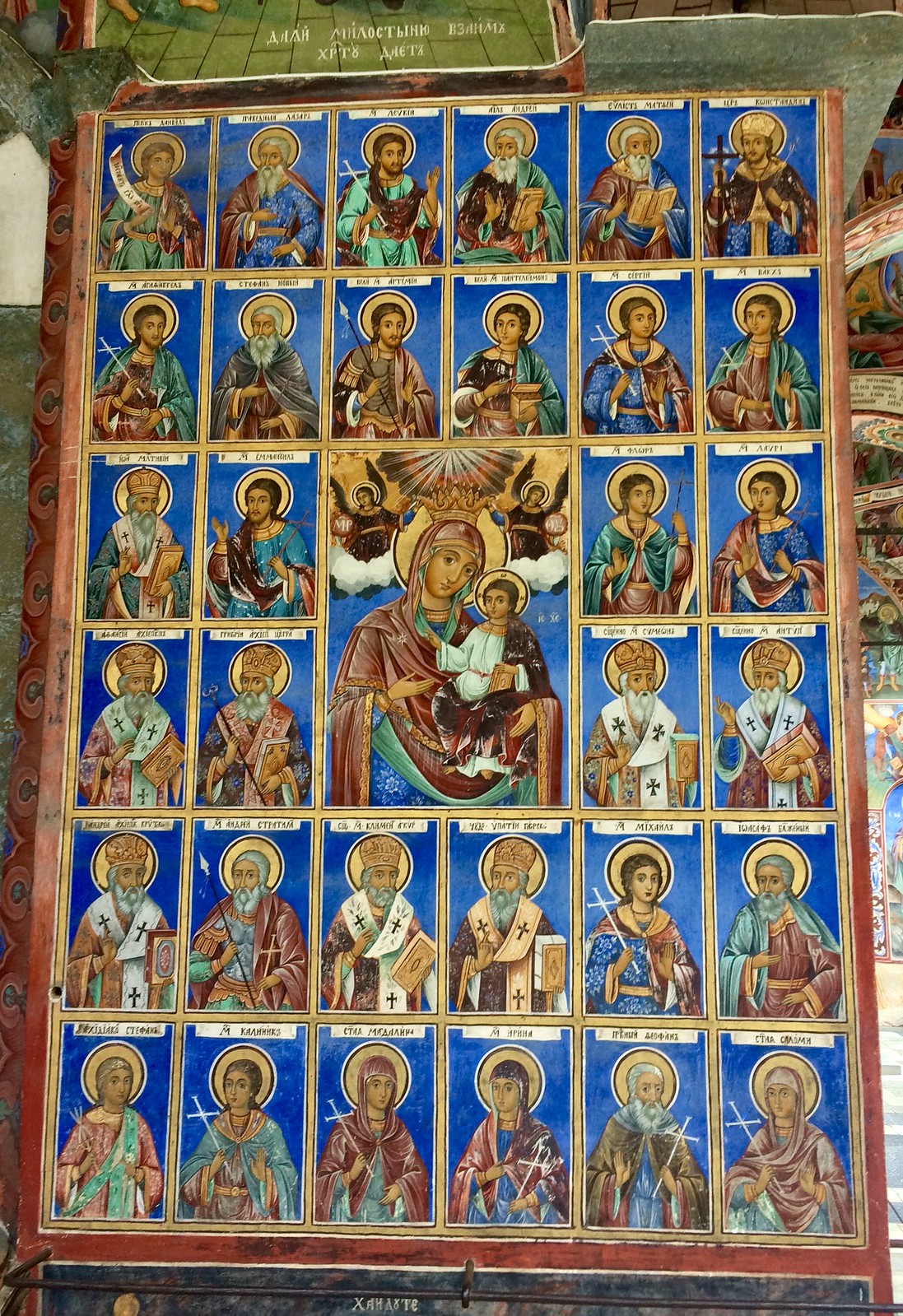 201705 - Balkans - Saints - 45 of 101 - Rila Monastery - Rilski manastir, May 26, 2017
201705 - Balkans - Saints - 45 of 101 - Rila Monastery - Rilski manastir, May 26, 2017
Four years before repose, John of a Rila wrote a book for his students. During Ottoman rule, originals and many Artifacts hidden in mountains, not later found Part of tombstone of John Bishops throne painted, inlaid with ivory The surrounding lands were given to Monastery as feudal holdings
There are 130 functioning Monasteries in Bulgaria
During Turkish rule Monastery was protected by many Sultans, beautiful documents woven into fabric confirming rights of Monastery Ornate gifts from Russia in the 18th c, when monks did a fundraising tour to Russia Woven shroud -- an amazing 3-d rug showing Christ in repose donated by Alexis Monastery in Arzamas, Russia.
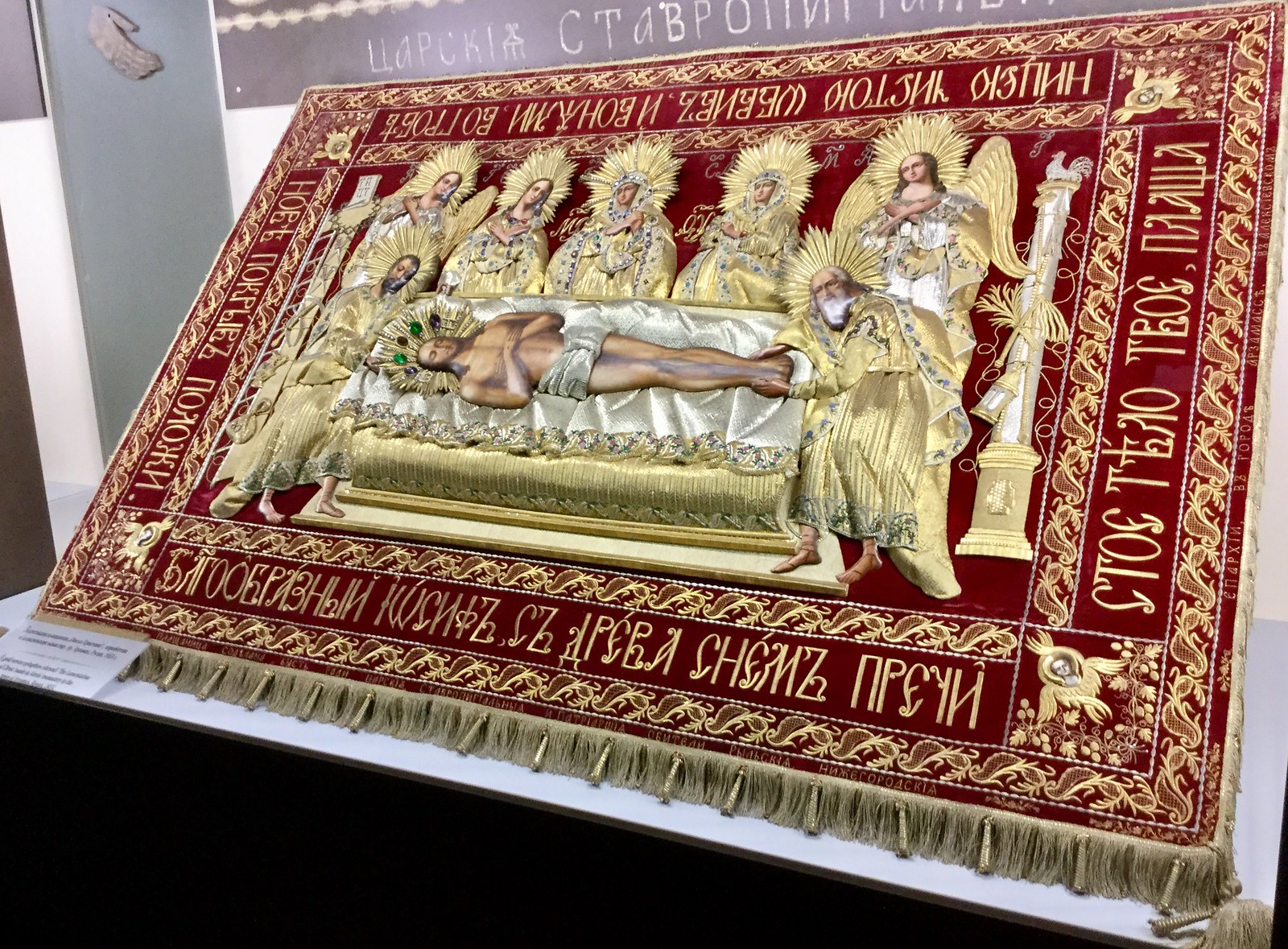 201705 - Balkans - Embroidered Shroud - 24 of 66 - Rila Monastery - Rilski manastir, May 26, 2017
201705 - Balkans - Embroidered Shroud - 24 of 66 - Rila Monastery - Rilski manastir, May 26, 2017
Monastery printing house opened in 1865. Beautiful engraved brass plates for printing. Resulting documents have a wonderful depth to the ink
Hieromonk Neofit Rilski in 19th c wrote many grammars, textbooks,
There were 40 armed guards for Monastery in 19th c. Monastery safe with five locks, five monks had separate keys to control who can open, weighs 500kg
Amazing wood carved cross with details so small they were shaped by pins, took 17 years to build
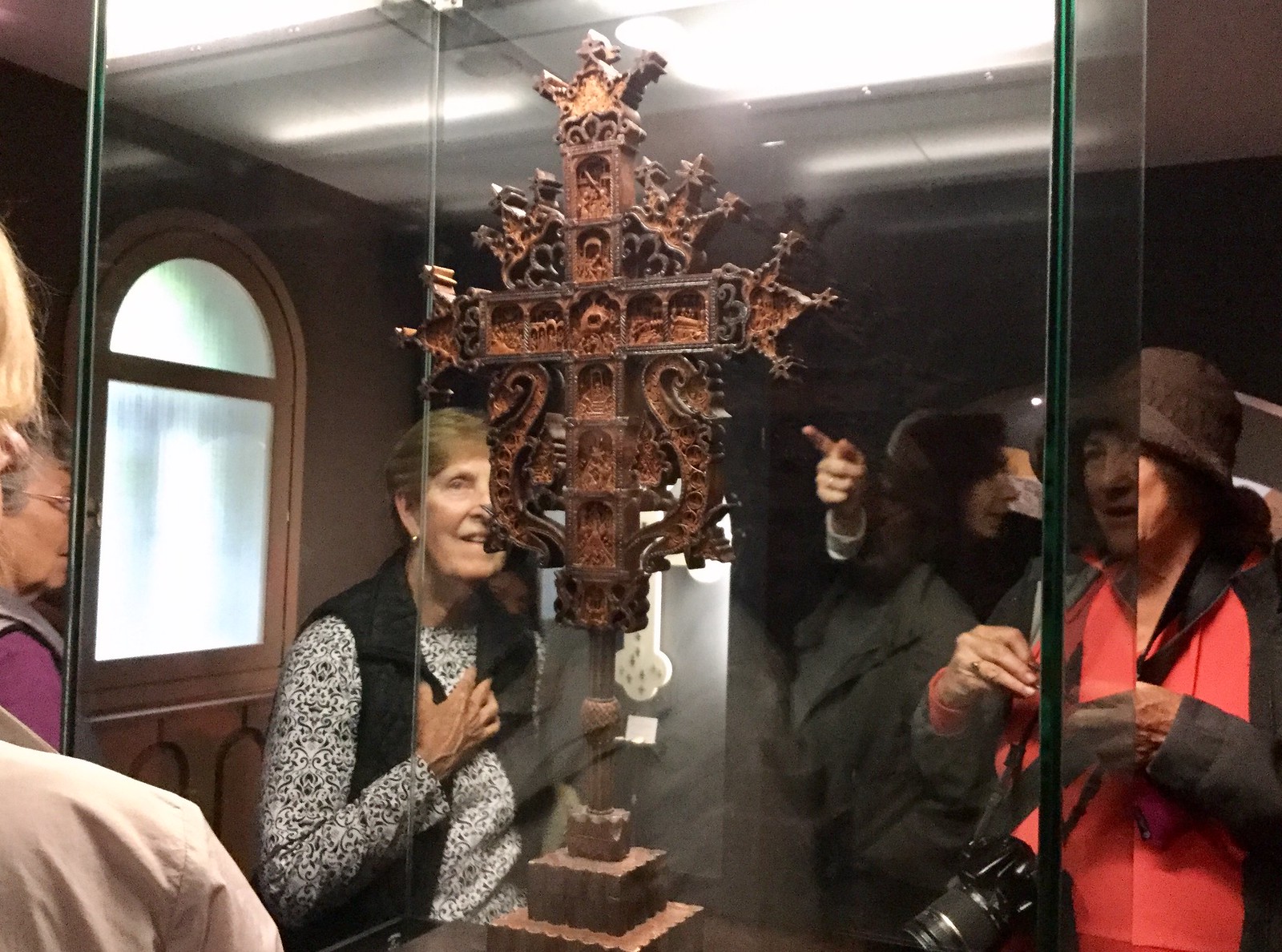 201705 - Balkans - Hand-Carved Cross - 47 of 101 - Rila Monastery - Rilski manastir, May 26, 2017
201705 - Balkans - Hand-Carved Cross - 47 of 101 - Rila Monastery - Rilski manastir, May 26, 2017
36 scenes, made of box woodTop is the last supper, scenes of Constantine and Helen,
Adoption of Christianity as a state religion across Slav countries in the 9th c Still shreds of paganism in 9th c Southern Slavs were oppressed into Christianity by Byzantine emperors Since no literacy until Christianity, little knowledge of the Slavic pagan religion
Trip to Macedonia
Passed Blagoevgrad, location of American University in Bulgaria All classes in English, funded by George Soros
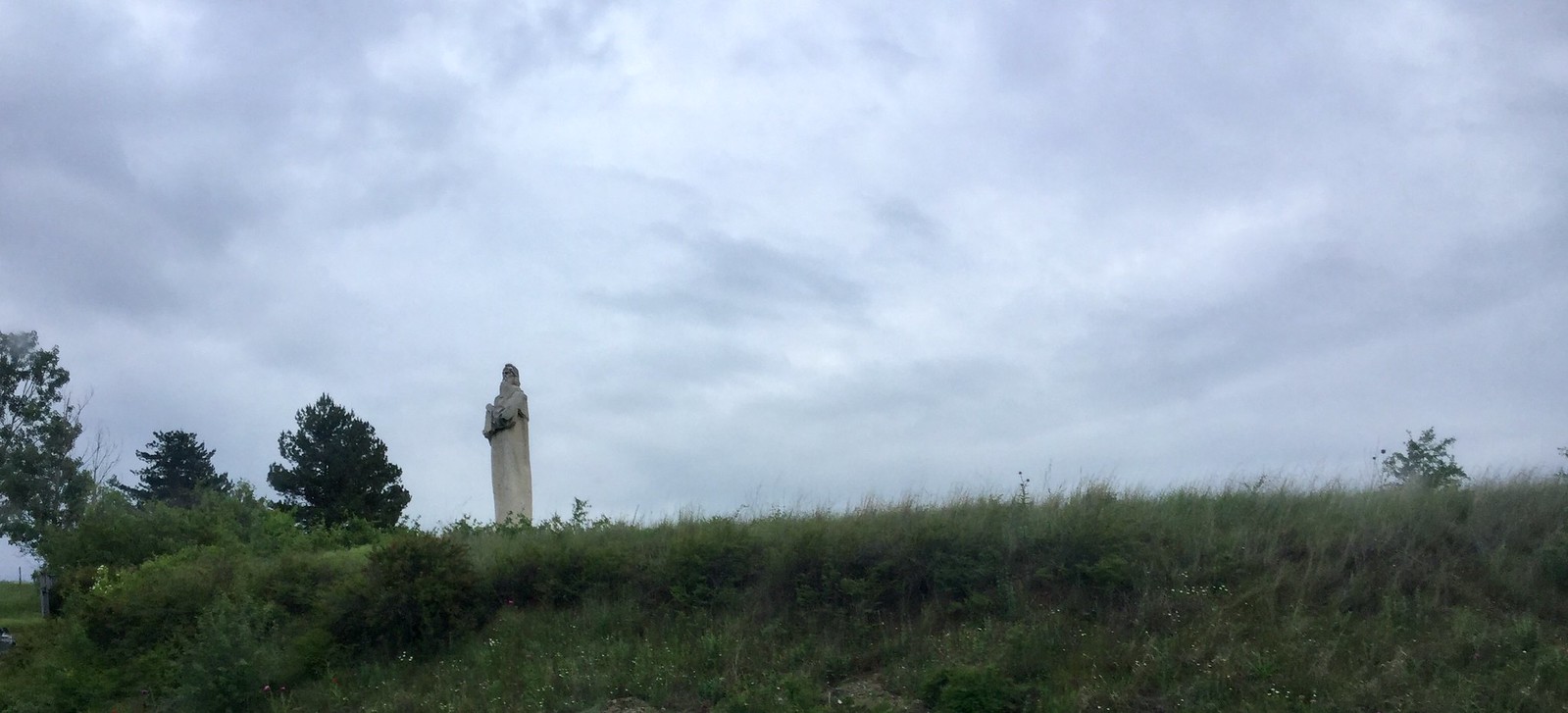 201705 - Balkans - Roadside Statue - 12 of 32 - Rila Monastery - Rilski manastir, May 26, 2017
201705 - Balkans - Roadside Statue - 12 of 32 - Rila Monastery - Rilski manastir, May 26, 2017
Discussion of Changing culture in Slavic countries
On the bus, talked about Slavic culture.
Militaristic macho culture Was rare when Slaviša growing up to see a man pushing a stroller. Getting better -- "more metrosexual" so still through external image but softer
"Rolling Stones" -- parents' parents were farmers, ongoing drain of countryside to city. Cultural opportunities so much more than before His little cousin is stacked with activities, like an American kid
Small towns terrible places for young -- no jobs few cultural opportunities
Teachers in Serbia are terribly paid and not respected
Aside: Baba Vanga
Born in rural Macedonia, before WWI, blind for most of her life Was hit by lightning lost her sight. Later she claimed she was taken and brought back, started claiming clairvoyance. Saw into distant future Sent to Belgrade school for the blind. Returned to Macedonia, married a Bulgarian, moved to SE Bulgaria Died 1995
Following for predicting future and providing advice. Predictions extend to 3000 and more Communist party was generally against any type of religion, folklore, mysticism, anything non materialistic But Bulgarian party started using her as a resource Popularized her for own cause. Suspected that she collaborated with secret police -- ministers would consult with her and she'd report back
Has a museum in the town she lived in, her former modest house, surrounded by steam springs
Border with Macedonia
Left EU, passport check, 1km later entered Macedonia, passport check.
Rainy dreary day after mostly sunny beautiful weather, nice that we're wasting it traveling. Misty gloomy border crossing makes it feel mysterious.
Winery Pikesh
Хура! Finally got here at 4:00
Huge vaults with aging wines, oldest go back to 1962
20 million liters of wine (capacity 35 million) Giant barrels, wines for sale aged 6 mos or 1 year.
 201705 - Balkans - Winery - 49 of 101 - Rila Monastery - Rilski manastir, May 26, 2017
201705 - Balkans - Winery - 49 of 101 - Rila Monastery - Rilski manastir, May 26, 2017
Trip to Kruševo
Lokum (Turkish Delight) is a big deal in Macedonia Kruševo is the Lokum capital of the world
Prilep
Passed through Prilep -- rugged agricultural country 60,000 people: tobacco production, high quality milk white marble One of the most patriotic cities in Macedonia, a lot of partisans who liberated country from Nazis came from here. Has a basketball and football team.
Very compact city: although only 60k population, it felt very urban. Many apartment buildings
Aside: Orient Express. Originally Venice to Istanbul, and same name used for many eastern destinations an origins in Vienna and Budapest. All went through Macedonia.
Passed a flock of sheep being herded along (taking up,a lane of) the highway
